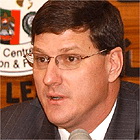CIA use of terrorist Mojahedin Khalq – Rajavi cult
The war between the United States and Iran is on. 
USA taxpayer dollars are funding activities that result in Iranians being killed and wounded and Iranian property destroyed — acts of war.
The war between the United States and Iran is on. American taxpayer dollars are being used, with the permission of Congress, to fund activities that result in Iranians being killed and wounded, and Iranian property destroyed.
This wanton violation of a nation’s sovereignty would not be tolerated if the tables were turned and Americans were being subjected to Iranian-funded covert actions that took the lives of Americans, on American soil, and destroyed American property and livelihood. Many Americans remain unaware of
what is transpiring abroad in their name.
Many of those who are cognizant of these activities are supportive of them, an outgrowth of misguided sentiment which holds Iran accountable for a list of grievances used by the U.S. government to justify the ongoing global war on terror. Iran, we are told, is not just a nation pursuing nuclear weapons, but is the largest state sponsor of terror in the world today.
Much of the information behind this is being promulgated by Israel, which has a vested interest in seeing Iran neutralized as a potential threat. But Israel is joined by another source, even more puzzling in terms of its broad-based acceptance in the world of American journalism: the Mujahadeen-e Khalk, or MEK, an Iranian opposition group sworn to overthrow the theocracy in Tehran. The CIA today provides material support to the actions of the MEK inside Iran.
The recent spate of explosions in Iran, including a particularly devastating "accident" involving a military convoy transporting ammunition in downtown Tehran, appears to be linked to an MEK operation; its agents working inside munitions manufacturing plants deliberately are committing acts of sabotage which lead to such explosions. If CIA money and planning support are behind these actions, the agency’s backing constitutes nothing less than an act of war on the part of the United States against Iran.
The MEK traces its roots back to the CIA-orchestrated overthrow of the democratically elected Prime Minister Mohammed Mossadeg. Formed among students and intellectuals, the MEK emerged in the 1960s as a serious threat to the reign of Reza Shah Pahlevi. Facing brutal repression from the Shah’s secret police, the SAVAK, the MEK became expert at blending into Iranian society, forming a cellular organizational structure which made it virtually impossible to eradicate. The MEK membership also became adept at gaining access to positions of sensitivity and authority. When the Shah was overthrown in 1978, the MEK played a major role and for a while worked hand in glove with the Islamic Revolution in crafting a post-Shah Iran. In 1979
the MEK had a central role in orchestrating the seizure of the U.S. Embassy in Tehran, and holding 55 Americans hostage for 444 days.
However, relations between the MEK and the Islamic regime in Tehran soured, and after the MEK staged a bloody coup attempt in 1981, all ties were severed and the two sides engaged in a violent civil war. Revolutionary Guard members who were active at that time have acknowledged how difficult it was to fight the MEK. In the end, massive acts of arbitrary arrest, torture and executions were required to break the back of mainstream MEK activity in Iran, although even the Revolutionary Guard today admits the MEK remains active and is virtually impossible to completely eradicate.
It is this stubborn ability to survive and operate inside Iran, at a time when no other intelligence service can establish and maintain a meaningful agent network there, which makes the MEK such an asset to nations such as the United States and Israel. The MEK is able to provide some useful intelligence; however, its overall value as an intelligence resource is negatively impacted by the fact that it is the sole source of human intelligence in Iran. As such, the group has taken to exaggerating and fabricating reports to serve its own political agenda. In this way, there is little to differentiate the MEK from another Middle Eastern expatriate opposition group, the Iraqi National Congress, or INC, which infamously supplied inaccurate intelligence to the United States and other governments and helped influence the U.S. decision to invade Iraq and overthrow Saddam Hussein. Today, the MEK sees itself in a similar role, providing sole-sourced intelligence to the United States and Israel in an effort to facilitate American military operations against Iran and, eventually, to overthrow the Islamic regime in Tehran.
The current situation concerning the MEK would be laughable if it were not for the violent reality of that organization’s activities. Upon its arrival in Iraq in 1986, the group was placed under the control of Saddam Hussein’s Mukhabarat, or intelligence service. The MEK was a heavily militarized organization and in 1988 participated in division-size military operations against Iran. The organization represents no state and can be found on the U.S. State Department’s list of terrorist organizations, yet since the U.S. invasion of Iraq in 2003, the MEK has been under the protection of the U.S. military. Its fighters are even given "protected status" under the Geneva Conventions. The MEK says its members in Iraq are refugees, not terrorists. And yet one would be hard-pressed to find why the 1951 Geneva Convention on Refugees should confer refugee status on an active paramilitary organization that uses "refugee camps" inside Iraq as its bases.
Scott Ritter, Jr. (born July 15, 1961) is noted for his role as a chief United Nations weapons inspector in Iraq from 1991 to 1998, and later for his criticism of United States foreign policy in the Middle East. Prior to the U.S. invasion of Iraq in March 2003, Ritter publicly argued that Iraq possessed no significant weapons of mass destruction (WMDs). He became a popular anti-war figure and talk show commentator as a result of his stance.
Seoul Times

